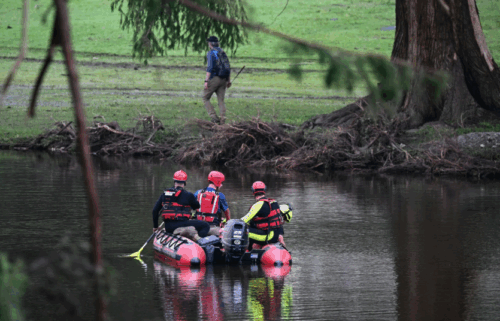UTEP working with NASA on cutting-edge outer space technology
The historic Apollo lunar landing on July 20, 1969 paved the way for future space exploration, and boy has lunar exploration changed in those 50 years. What many people may not know is that University of Texas El Paso is on the forefront of cutting-edge space engineering, working with NASA and the Johnson Space Center, among other agencies.
ABC-7’s Hillary Floren and photographer David Avila were the first TV crew to visit the NASA MIRO Center for Space Exploration and Technology Research (cSETR) in Fabens.
A lot of big words are thrown around in this facility, but basically what’s inside are local students and professors, doing groundbreaking work that may end up in space in the near future.
The center was established under the direction of Dr. Ahsan Choudhuri, who oversees rocket launches, fuel testing and rocket cooling systems in addition to his instructional hours in the classroom. He says the space industry is going through constant, major changes.
“Apollo 11 was a turning point that inspired a new generation of scientists and engineers. The whole lunar exploration business is no longer run the by the government or NASA. Many commercial companies and entrepreneurs are on board. It’s an exciting time for exploration,” says Choudhuri. He’s hoping the current lunar exploration program will generate a similar excitement, bringing more local engineering students into the program.
Of the more than 400 students who have gone through the program since 2011, most grew up in El Paso and attended local high schools.
We caught up with El Paso High graduate Linda Hernandez, who is perfecting a rocket cooling system. She says didn’t know the program existed at UTEP, and now with her master’s in mechanical engineering, is looking forward to starting a job with Lockheed Martin in January.
“I want to see something that I built go into space. Or help someone else go into space. I would be so thrilled…just to be a little part of that,” says Hernandez.
Another student, Mariana Chaires, will soon leave campus with a PhD in mechanical engineering. She says she’s come a long way since she was a student at Socorro high school. She dreamed of space as a little girl, and now will be working directly for NASA.
We also spoke with Eastwood high graduate Corey Hansen, who’s working on his master’s in Engineering. He’ll start a NASA internship next month. His favorite part of school? Launching rockets.
“It’s super exciting. Even the testing is exciting,” says Hansen. He says the opportunities are great no matter what your interests. “There are rocket, airplane, drone projects…anything! Talk to your professors, and you can find an opportunity. It’ll be tough, but it’s worth it. Lots of late nights studying for exams, and times when I wondered if I could do it, but I had to find a way to make it happen.”
Lofty dreams of space, coming true in a transformed airport hangar in Fabens, Texas. And the program is expanding. NASA MIRO cSETR boasts five laboratories, and has established itself in progressive, world renown research in propulsion and energy. It is fueled by multiple agencies, and most Master’s graduates have impressive six-figure salary offers, according to Dr. Choudhuri.
